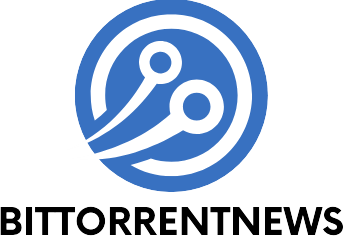Table of Contents
ToggleIn today’s fast-paced work environment, managing a team can feel like herding cats—chaotic and unpredictable. But fear not! Team management tools are here to save the day, transforming that feline frenzy into a well-oiled machine. These digital superheroes not only streamline communication but also boost productivity, making it easier for teams to collaborate and conquer their goals.
Overview of Team Management Tools
Team management tools offer a range of features that simplify and enhance team collaboration. These tools streamline communication, allowing teams to share updates, documents, and feedback in real time. Project management capabilities in these solutions enable users to assign tasks, set deadlines, and monitor progress, ensuring every team member is aligned with project goals.
Specific tools designed for team management often include features like time tracking, which helps individuals understand how they allocate their time. Integration with other software, such as calendars and file storage platforms, boosts efficiency and keeps all relevant information accessible. Reports generated by these tools provide insight into performance metrics, facilitating informed decision-making about resource allocation.
Task prioritization emerges as a critical function of team management tools. By visualizing workload, teams can identify key tasks needing immediate attention and adjust schedules accordingly. User-friendly interfaces make navigating these tools intuitive, reducing the learning curve for new members.
Additionally, many tools offer mobile applications, supporting remote teams in staying connected. Notifications and reminders ensure tasks remain on track, while discussion boards facilitate ongoing conversations without the clutter of email.
Security features often rank highly among organizations evaluating team management tools. Protecting sensitive information through encryption and access controls is essential in today’s digital landscape. By employing these tools, teams enhance productivity, foster collaboration, and ultimately reach their objectives more effectively.
Key Features of Team Management Tools
Team management tools provide essential features that enhance collaboration and productivity. They help teams navigate challenges seamlessly.
Task Management
Task management features allow users to assign tasks clearly and set deadlines efficiently. Visual workload boards help prioritize assignments, ensuring critical tasks receive attention first. Users can track progress in real time, easily adapting schedules as needed. Creating subtasks simplifies complex projects, making large objectives more manageable. Regular updates keep everyone aligned, fostering accountability and transparency within the team.
Communication Tools
Communication tools are vital for keeping teams connected, especially in diverse work environments. Real-time messaging platforms facilitate quick exchanges, while discussion boards encourage more in-depth conversations. Notifications remind team members about deadlines and important updates, reducing the chance of missed tasks. Integration with email and video conferencing enhances overall communication capabilities. Teams can establish a unified communication hub that streamlines interactions and enhances clarity.
Collaboration Features
Collaboration features empower teams to work together effectively on projects. Document sharing capabilities enable simultaneous editing, making it easy to incorporate feedback from various members. File storage solutions eliminate version control issues, securing the latest information in one spot. Activity logs provide insights into contributions, helping recognize efforts and maintain motivation. Enhanced brainstorming tools foster creativity, allowing teams to generate ideas collaboratively and innovate solutions.
Popular Team Management Tools
Various team management tools provide robust features for enhancing collaboration and productivity. These tools cater to different team needs, ensuring effective project execution.
Tool A
Asana streamlines project management with an intuitive interface. Users can create tasks, set due dates, and assign responsibilities to team members. Visual boards help prioritize tasks and track progress in real time. Integration with apps like Slack enhances communication, keeping everyone connected. Reporting features provide insights into team performance, aiding in informed decision-making.
Tool B
Trello offers a flexible card-based system for managing tasks. Users easily customize boards for various projects while visually tracking progress. Collaboration features enable comments and file sharing directly on task cards, promoting ongoing communication. The platform supports checklists for task prioritization. Mobile applications ensure team members stay updated on the go.
Tool C
Monday.com provides a versatile workspace for managing projects and workflows. Users can automate repetitive tasks, saving time and increasing efficiency. Customizable templates are available for different project types, allowing teams to adapt the tool to specific needs. Time tracking functionality aids in performance assessments. Integration with popular platforms fosters seamless data sharing, enhancing collaboration.
Benefits of Using Team Management Tools
Team management tools greatly enhance communication among team members, enabling seamless exchanges of ideas, updates, and feedback. Streamlined interaction fosters a collaborative environment. Improved collaboration leads to increased productivity, as teams can work together more effectively towards shared goals.
Real-time project management features allow for immediate task assignment and deadline setting. These functionalities keep everyone aligned with project timelines. Clear visibility of workloads aids in prioritization, helping teams focus on critical tasks first. Various tools, like visual workload boards, facilitate this process by allowing users to see task statuses at a glance.
Time tracking features serve to enhance accountability. They provide insights into where time is spent, enabling teams to optimize their efforts. Reporting capabilities further support informed decision-making by highlighting performance metrics and identifying areas for improvement.
User-friendly interfaces provide ease of access, especially for remote teams. Mobile applications ensure team members stay connected, no matter where they are. Notifications and discussion boards create a platform for ongoing engagement, keeping everyone informed about project developments.
Security features, such as encryption and access controls, safeguard sensitive information. Protecting data becomes essential, particularly in remote and hybrid work environments. Integration with other software enhances the functionality of team management tools, ensuring teams can work within familiar ecosystems while maximizing efficiency.
Popular tools like Asana, Trello, and Monday.com each offer distinct advantages. Asana’s intuitive interface simplifies task management, while Trello’s card-based system allows creative flexibility. Monday.com boasts extensive automation capabilities, which streamline various workflows and enhance project coordination.
By leveraging these tools, teams significantly boost their performance and achieve objectives more effectively.
Challenges and Considerations
Team management tools face specific challenges when implemented in organizations. Diverse team structures often lead to complications in communication, making it difficult for members to stay aligned. Misalignment occurs frequently when team members use different tools, creating inconsistencies in project updates and task management.
Integration with existing software presents another hurdle. Many teams utilize various applications that may not seamlessly connect with new tools, hindering efficiency. Limited integration can restrict real-time collaboration and data sharing, impacting overall productivity.
User adoption is crucial for success. Resistance to change often arises, especially if team members are accustomed to existing workflows. Ensuring that all team members understand the advantages of the new tools is vital for fostering a collaborative environment.
Training sessions can address these issues. Providing necessary education on features can enhance user confidence and promote effective tool usage. Continuous support is equally important to assist team members in navigating challenges that arise during implementation.
Security concerns also demand attention. Protecting sensitive information in team management tools is essential to maintain trust. Teams must ensure that chosen tools offer strong security features, including encryption and access controls, to safeguard data.
Performance reporting can lead to over-reliance on metrics. Teams often focus heavily on data analysis, potentially sidelining important qualitative aspects of project management. Balancing quantitative insights with team feedback ensures a holistic approach to performance improvement.
Lastly, addressing the unique needs of remote teams often requires additional considerations. Solutions must cater to varying work environments and provide robust features that support effective communication and collaboration, ensuring all team members remain engaged regardless of location.
Conclusion
Embracing team management tools can significantly enhance collaboration and productivity in any work environment. By streamlining communication and offering real-time project management features, these tools empower teams to stay organized and focused on their goals.
The benefits extend beyond task management; they foster a culture of accountability and transparency. As teams navigate the complexities of modern work, selecting the right tools tailored to their unique needs can make all the difference.
Investing in team management solutions not only optimizes workflow but also strengthens team dynamics, paving the way for greater success in achieving objectives.



